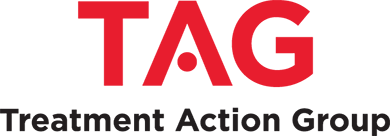By Tim Horn
 Though the number of new HIV infections in the United States is down from its peak in the 1980s, incidence has refused to budge below its decade-long average: roughly 50,000 American residents are infected with the virus every year. While advocacy is making significant progress in terms of scaling up HIV testing, engagement-in-care and treatment for people living with the virus—all stages of the HIV care continuum that can help prevent ongoing transmission of HIV—little has been done to see key prevention goals of the National HIV/AIDS Strategy implemented and achieved.
Though the number of new HIV infections in the United States is down from its peak in the 1980s, incidence has refused to budge below its decade-long average: roughly 50,000 American residents are infected with the virus every year. While advocacy is making significant progress in terms of scaling up HIV testing, engagement-in-care and treatment for people living with the virus—all stages of the HIV care continuum that can help prevent ongoing transmission of HIV—little has been done to see key prevention goals of the National HIV/AIDS Strategy implemented and achieved.
TAG, in close collaboration with activists, national and community-based organizations, researchers, and federal and state government agency heads, is gearing up to develop and advance the research and policy advocacy necessary to lower the annual number of new infections by at least 25 percent. To help us achieve this, two stellar activists, Jeremiah Johnson and Kenyon Farrow, have joined TAG and will play essential roles as we recommit ourselves to minimizing the risks of HIV, particularly in the hardest-hit populations and areas. Johnson will serve as TAG’s first HIV Prevention Research and Policy Coordinator and Farrow as the organization’s new U.S. and Global Health Policy Director.
Attention to the burgeoning epidemic among men who have sex with men (MSM) and transgender women will be essential. Despite comprising just four percent of the U.S. population, MSM accounted for 63 percent of estimated new HIV infections in the country and 78 percent of infections among all newly infected men in 2010. What’s more, from 2008 to 2010, new HIV infections increased an astonishing 22 percent among MSM between 13 and 24 years of age. As for transgender women, a 2008 analysis of four studies documented an HIV prevalence of nearly 28 percent, with one of the studies noting that 73 percent of transgender women who tested positive were unaware of their HIV status.
One advocacy priority will be a push, on federal and state levels, to use twenty-first-century surveillance tools, including the scale-up of fourth-generation HIV antigen/antibody assays that allow for diagnosis within days of infection and can distinguish between acute and chronic HIV. Another will be the enlargement of cohorts used as part of the National HIV Behavioral Surveillance study to evaluate trends in incidence.
TAG will be working to develop national, regional, and systems-specific continuums of disease prevention. Our efforts to maximize the engagement of people living with HIV in continuous care must be matched by implementation strategies and science to link and retain those who test HIV-negative—particularly those who are at high risk of being exposed to the virus—in primary care and community programs equipped to provide comprehensive preventive services. These would include high-quality HIV-, reproductive health–, and sexual health education; nonoccupational postexposure prophylaxis (PEP); preexposure prophylaxis (PrEP); as well as screening and treatment for substance use, depression, mental health issues, trauma, and violence.
Even with massive efforts to increase rates of HIV diagnosis, engagement in care, and undetectable viral load among U.S. residents living with the virus, it will still take several years for treatment-as-prevention to substantially reduce HIV incidence. We cannot sit by and wait for this to occur. Rather, we must revitalize the U.S. commitment to high-quality, evidence-based HIV prevention in tandem with strategies to maximize HIV care and treatment.
